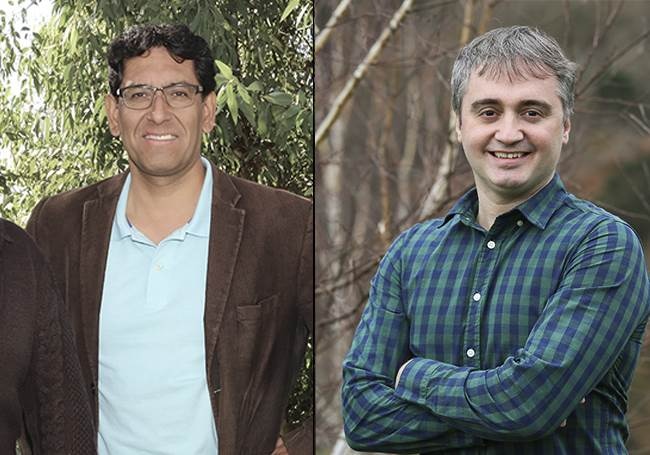Jan 22 2019
The Quantum Technologies for Information Science (QUTIS) group at the UPV/EHU’s Department of Physical Chemistry has taken part in an international study in collaboration with the CSIC and the University of Ulm in Germany.
 Quantum sensor for nuclear magnetic resonance. (Image credit: Jorge Casanova-UPV/EHU)
Quantum sensor for nuclear magnetic resonance. (Image credit: Jorge Casanova-UPV/EHU)
As part of the study, a series of protocols have been developed for quantum sensors that could enable images to be acquired through the nuclear magnetic resonance of single biomolecules with a minimal amount of radiation. The outcomes of the study have been reported in Physical Review Letters, a prestigious interdisciplinary physics journal.
The nuclear magnetic resonance (NMR) technique is applied for a range of applications, like neuroscience, medical imaging, or detection of explosives and drugs. Through the use of quantum sensors, NMR has been adapted to operate in the nanoscale level, where it has the potential to influence various disciplines (for example, medicine, biology, and life sciences) and to facilitate measurements of incomparable sensitivity and precision.
Specifically, “we expect that the combination of quantum sensors and dynamical decoupling techniques allows NMR imaging of single biomolecules” stated the authors, among whom are Dr Jorge Casanova (Ikerbasque researcher) and Ikerbasque Professor Enrique Solano, from the QUTIS group of the UPV/EHU’s Department of Physical Chemistry, as well as researchers of the CSIC, and the University of Ulm (Germany). This quantum-enhanced NMR “will be able to resolve chemical shifts in tiny picoliter samples, producing biosensors with unparalleled sensitivity and providing new insights into the structure, dynamics, and function of biomolecules and biological processes,” they added.
In this regard, a basic tool for enhancing the sensitivity of NMR setups is to apply large magnetic fields “that polarize our samples, enhance the signal and increase coherence,” they specified. This approach is used, for example, in MRI, where the human body is subject to immense magnetic fields produced by superconducting coils. However, challenges are faced while interfacing these samples with the new quantum sensors, “because our samples may oscillate much faster than our sensor can follow.”
In the study reported in Physical Review Letters, the researchers created a protocol to enable a quantum sensor to measure the electronic and nuclear spins in arbitrary samples, even if they occur in large magnetic fields. In these techniques, a low-power microwave radiation is used to bridge the energy difference between the sample and their sensor.
“The protocol is robust and requires less energy than previous techniques. This not only extends the operation regime of the sensor to stronger magnetic fields, but also prevents the heating of biological samples that would result when using conventional protocols and microwave powers. As a consequence, this work opens a new research line and paves the way for the safe use of nanoscale NMR in the study of biological samples and large biomolecules,” the researchers stated.